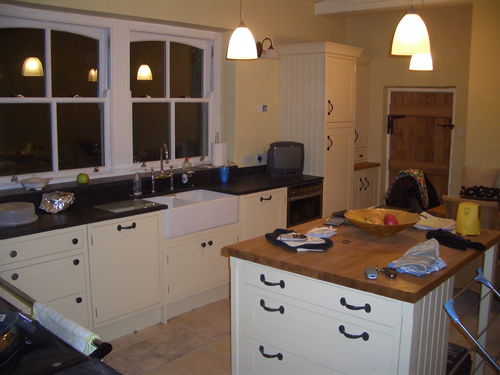Invest in your kitchen to sell your house
The kitchen is fast becoming the most important room in a property and can help to sell your house if you get it right


With the demise of the formal dining room and the increasing tendency towards open-plan spaces where cooking and entertaining take place side by side, the kitchen is fast becoming the most important room in a property. ‘Kitchens sell houses,' says Tim Winney of Winkworth Highcliffe, simply. David Smith, senior partner at Carter Jonas, agrees: ‘For many people, it's this room that determines whether they buy a property or not.' When you buy a house, you're buying an empty shell in the case of most rooms-but not in the case of the kitchen.
Mr Smith believes that, when you're dealing with a house worth £1 million or more, investing up to 5% of the property value in the kitchen can bring a positive return. Lianne Bootland of Midas Property Consultants (www.midaspropertyconsultants.co.uk) is of the opinion that ‘a new kitchen can make your property more appealing to buyers'-and it can add as much as 4% to its value, according to the Royal Institution of Chartered Surveyors. However, she warns owners that ‘there's little chance of recouping costs if you add a bespoke £25,000 kitchen to a £190,000 property. The reverse is also true-installing a £10,000 kitchen in a £500,000 house will detract from the property's value and overall appeal.'
Mr Winney takes a more sanguine approach: ‘The price of a kitchen is irrelevant now, really, as the choice available is staggering. Even the cheapest kitchen can look good.' A report by insurance company LV= found that the kitchen is typically the most expensive room in British homes, and that the average spend on it has increased by 45% over the past five years. Despite this, Hugo Tugman, founder of Architect Your Home (www.architect-yourhome.com), believes that most people misunderstand the nature of the work they need to do on the kitchen to increase their property's value: ‘Replacing a dog-eared set of units, worktops and appliances with newer, spangly ones will give a small return on the investment, but what really increases value is when you transform a kitchen.'
Mr Tugman cites the case of a property he worked on where the owner spent £55,000 on stripping out the ground floor and knocking down a wall to enlarge the kitchen space, installing new flooring and lighting, adding beams and creating an opening out to the garden. After this expenditure, the estate agent's valuation of the property went from £750,000 to £900,000. However, according to Mr Tugman, some clients become so fixated on their kitchen's perceived future value that they ignore what they need from a room they'll be using daily for years themselves. To those who are redesigning with half an eye on what might sell, he advises: ‘Simplicity will never go out of fashion.
A few long worktops are better than lots of short ones. Use natural colours and simple lines, and don't try to cram in too much.' He also recommends considering who is likely to buy the property. If the area in which you live is popular with people who have young families, for example, gear your kitchen design towards their needs. Mr Smith says that ‘nine out of 10' of his buyers want four main things from a kitchen-an Aga, space for a dining table, room for a sofa and French doors that open onto a terrace. Miss Bootland suggests that the key area to consider when redesigning a kitchen is the space between the cooker, fridge and sink.
‘Fifty years ago, efficiency experts tracked the average woman's steps in the kitchen, and found the distance between those three items and how easy it is to reach them is a measure of the perfect kitchen. It's called the Kitchen Triangle, and a complex equation works out the optimum measurements.
The sides of the triangle don't have to be equal, but the distances should add up to somewhere between 12ft and 23ft. So, if the cooker and fridge are 3ft apart, the sink and fridge could be 8ft apart and the cooker and sink 10ft. One other measurement is important: if you're having an island, there should be at least 4ft between it and the nearest counter. She warns that ‘unless you're selling a bespoke property or a property with a high price tag, a brand-name kitchen won't add value,' she adds. ‘It's design and content that really add to the value of your home.'
Exquisite houses, the beauty of Nature, and how to get the most from your life, straight to your inbox.
Lastly, ‘make sure the kitchen matches the house,' advises Mr Winney. ‘A modern house should have a contemporary kitchen, and a cottage should have a Shaker-style one. Buyers also always want to walk into a kitchen that's welcoming and bright.'
Country Life is unlike any other magazine: the only glossy weekly on the newsstand and the only magazine that has been guest-edited by His Majesty The King not once, but twice. It is a celebration of modern rural life and all its diverse joys and pleasures — that was first published in Queen Victoria's Diamond Jubilee year. Our eclectic mixture of witty and informative content — from the most up-to-date property news and commentary and a coveted glimpse inside some of the UK's best houses and gardens, to gardening, the arts and interior design, written by experts in their field — still cannot be found in print or online, anywhere else.

